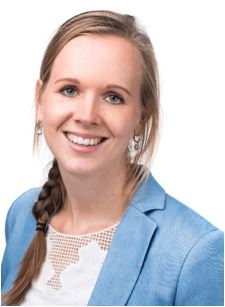The potential of low and high field magnetic resonance imaging to diagnose pathologies near orthopaedic hardware
Due to the COVID-19 crisis the PhD defence of Femke Schröder will take place (partly) online.
The PhD defence can be followed by a live stream.
Femke Schröder is a PhD student in the research group Biomechanical Engineering (BE). Her supervisor is prof.dr.ir. N.J.J. Verdonschot from the Faculty of Engineering Technology (ET).
 In orthopaedic surgery, often orthopaedic hardware (e.g. suture anchors, prosthesis, osteosynthesis material) made of metal alloys is implanted. Before the implantation of orthopaedic hardware, magnetic resonance imaging (MRI) is the imaging modality of choice for imaging musculoskeletal structures. After implantation of orthopaedic hardware, MRI is disturbed by susceptibility artefacts due to the metal implants, which reduce the diagnostic value. Lowering the main magnetic field should reduce the size and prominence of susceptibility artefacts.
In orthopaedic surgery, often orthopaedic hardware (e.g. suture anchors, prosthesis, osteosynthesis material) made of metal alloys is implanted. Before the implantation of orthopaedic hardware, magnetic resonance imaging (MRI) is the imaging modality of choice for imaging musculoskeletal structures. After implantation of orthopaedic hardware, MRI is disturbed by susceptibility artefacts due to the metal implants, which reduce the diagnostic value. Lowering the main magnetic field should reduce the size and prominence of susceptibility artefacts.
In clinical practice MRI is performed in supine condition; however, given that during the day our limbs are in weight-bearing position, it seems relevant to image them in similar weight-bearing conditions. Low-field MRI offers the possibility for imaging in upright weight-bearing position.
Therefore, this thesis first investigates the diagnostic properties of MRI near orthopaedic hardware. Second, it explores the added value of weight-bearing low-field MRI after the most frequently performed joint procedure, the total knee arthroplasty (TKA).
Based on this thesis is concluded that MRI is a useful imaging modality after surgery in which orthopaedic hardware (titanium suture anchors, TKA, or other) is implanted. Although the added value of weight-bearing MRI could not be proven, high-field MRI performs as well as low-field MRI in imaging several pathologies and can be considered as an addition to the current diagnostic arsenal. High-field MRI excels in image quality, low-field in usability at low cost.





